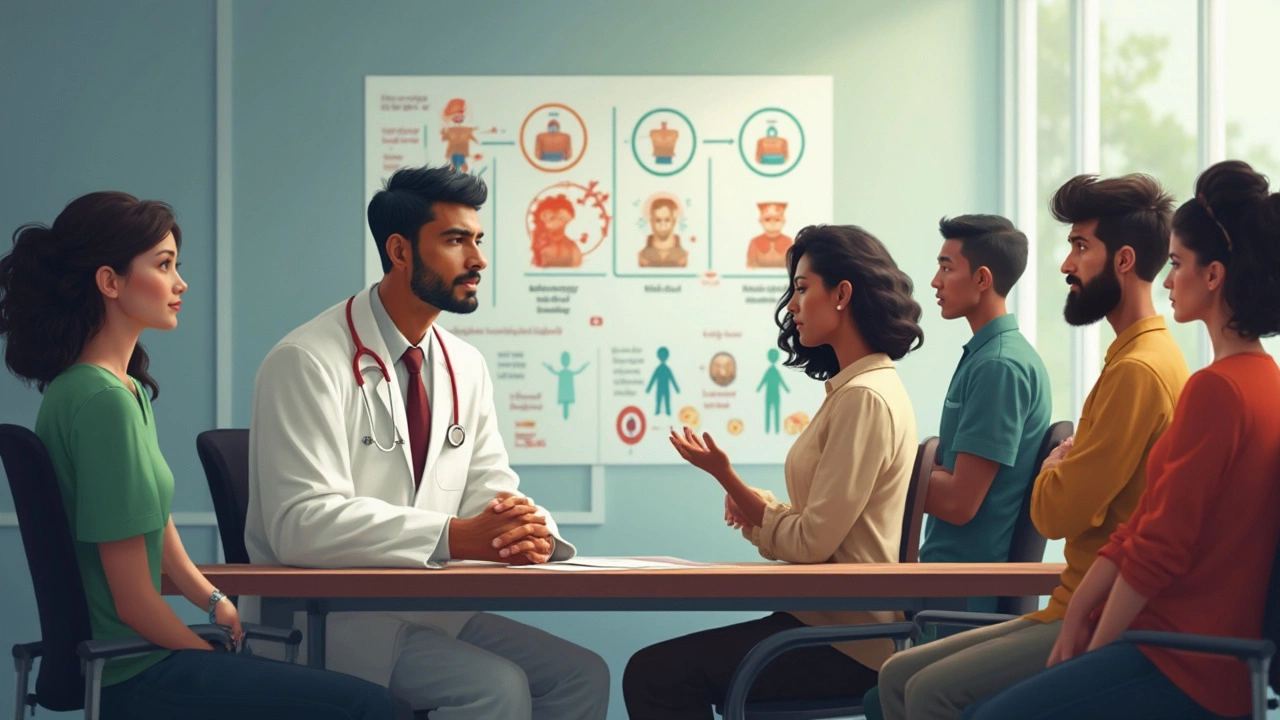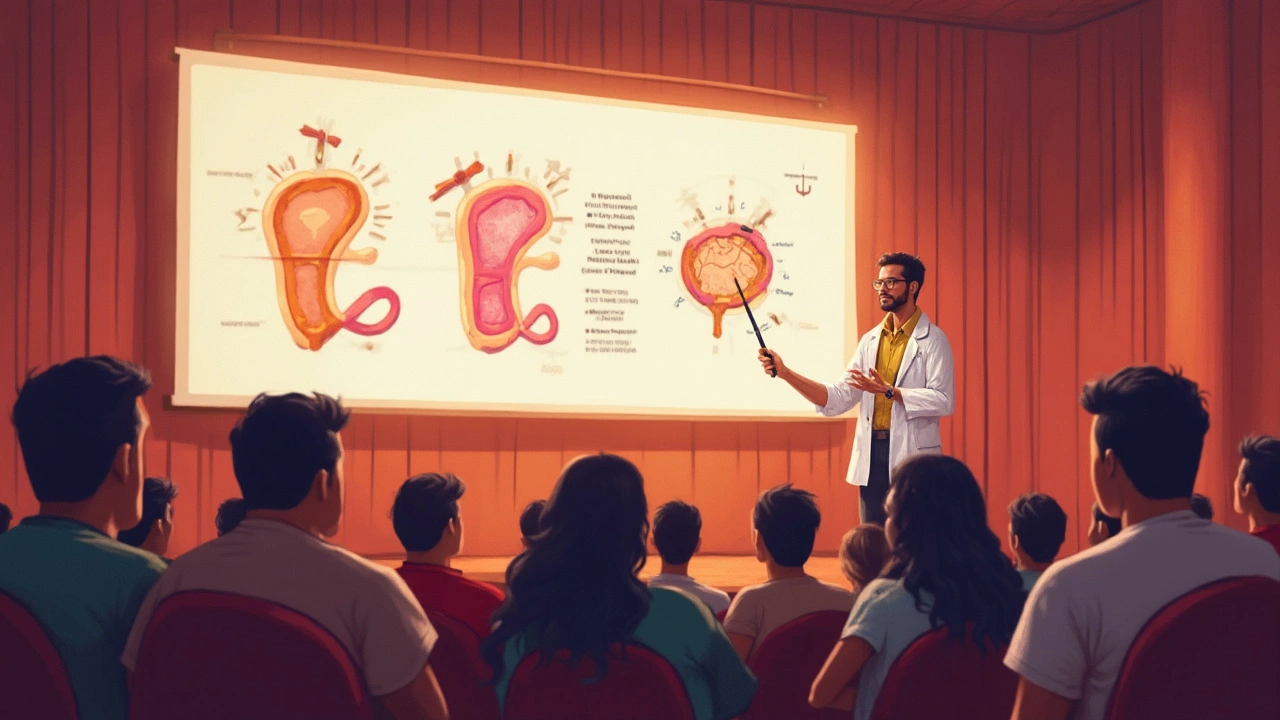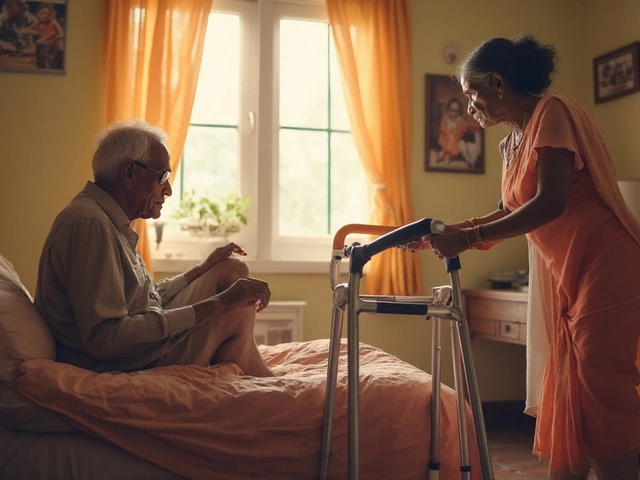
When talking about cancer, most folks have heard about different stages. But have you ever wondered if there's a stage 5? Surprisingly, despite what some might think, there isn’t a stage 5 in cancer terminology. The medical community mainly uses a four-stage system to classify the progression of cancer.
To break it down, the stages are based on how much cancer has spread. Stage 1 is like the baby step, where it hasn't ventured far from its starting point. By the time you're talking about stage 4, it's more like that annoying rumor that’s spread everywhere. The idea of a stage 5 simply doesn’t fit into this system.
So, where does this 'stage 5' talk come from? It might be from a slip of the tongue or just a misunderstanding. For a lot of people, anything beyond stage 4 feels mysterious and overwhelming, so it's easy to assume there’s another stage lurking around. But nope, it stops at 4!
- Understanding Cancer Staging
- Why No Stage 5 Exists
- Misconceptions and Myths
- Navigating Advanced Cancer Care
- The Importance of Early Detection
Why No Stage 5 Exists
So, let’s get to the real deal—why isn’t there a stage 5 cancer? It all comes down to how cancer staging is designed. The TNM system, which stands for Tumor, Nodes, and Metastasis, is the most common method. It keeps things simple and consistent by using a scale from stages 0 through 4.
This system is all about how far the cancer spreads. For instance, Stage 0 is like the cancer showing up to the party but not making a scene, while Stage 4 is when it’s crashing every room in the house. The medical community stops at Stage 4 because this is when cancer has usually spread to distant parts of the body, making treatment super challenging.
Imagine if we tried adding more stages. It would just complicate things with little benefit. Instead, doctors focus on the specifics—like where exactly the cancer has spread and what it looks like under a microscope. That gives a clearer picture than just adding another number.
By sticking to the four-stage system, healthcare providers can communicate better about cancer treatment options and what to expect. The key takeaway? Trust the process, because the existing system is designed with precision and care to help manage the nuances of the disease.
Plus, it helps everyone involved—patients, doctors, researchers—stay on the same page when discussing treatment strategies, outcomes, and support. Keeping things straightforward and standardized ensures that everyone is speaking the same language when it comes to fighting cancer.
Misconceptions and Myths
With something as complicated as cancer, it's no wonder myths and misconceptions pop up. One of the big ones is the idea of stage 5 cancer. Let's get it straight: medically speaking, stage 5 doesn’t exist. The standard staging system ends at stage 4, which covers cancers that have spread the farthest.
So why do people talk about stage 5? Maybe it sounds serious and emphasizes the severity of the disease, but in a way that's not scientifically backed. It's almost become an urban legend in the realm of health discussions.
Another myth is that all cancers progress linearly through the stages. In reality, some cancers might jump straight to stage 3 or 4 if detected late, missing the earlier stages entirely. This reflects not the cancer's aggression, but rather the timing of detection.
Also, there's a misconception that staging remains static. Stage 3, for example, stays 3, but the cancer can progress or respond to treatment, changing its overall impact.
Lastly, many believe stages directly equate to prognosis—a higher stage meaning a guaranteed poor outcome. But thanks to advances in cancer treatment, that's not always the case. Survival rates and treatment success can vary vastly based on the type of cancer and individual health conditions.
To avoid these myths from spreading, it’s crucial to rely on credible sources and have open conversations with healthcare providers. Understanding the real deal about stages can help in managing expectations and planning the right path forward.

Navigating Advanced Cancer Care
When it comes to cancer treatment, dealing with advanced stages can feel overwhelming. But knowing what options are out there can make a world of difference. At this point, the focus might shift from intense treatment aimed at curing to managing symptoms and maintaining quality of life.
One of the most crucial things is having a solid support system, which includes your healthcare team, family, and friends. Your doctors might suggest a combination of treatments like chemotherapy, radiation, or newer options like immunotherapy. They might even talk about clinical trials, which can be worth exploring. These trials can offer access to the latest breakthroughs in cancer care.
Here are a few tips to help you or your loved one navigate this journey:
- Get a team you trust: Your healthcare team should feel like partners in this journey. Don’t hesitate to ask them questions or seek second opinions. They’re there to help you.
- Stay informed: Understanding your treatment plan can empower you. Whether it's reading reputable sources or asking your doctor to explain terms you don’t get, knowledge is power.
- Consider palliative care: This isn’t a last resort but a way to keep symptoms in check and improve your comfort level. It can be introduced alongside other treatments.
- Emotional support: Don’t underestimate the value of talking to therapists or support groups. They can offer a safe space to vent feelings and connect with others in similar situations.
The key here is to tailor the cancer treatment to fit the person's needs and situation. Remember, the goal is often about improving quality of life as much as possible. And don’t forget about regular check-ins with your dog, Shadow. Pets are great for emotional support!
Navigating advanced cancer care means tapping into all the resources available and focusing on living as fully and comfortably as possible. Taking it one day at a time can make a huge difference in managing this challenging journey.
The Importance of Early Detection
Imagine catching a problem before it turns into a disaster. That's exactly what early detection in cancer does. It’s like being a step ahead, giving you better odds against the disease. Finding cancer early means there's a better chance of treating it successfully.
Most cancers are easier to treat when they're small and haven’t spread. Let's be real—catching it when it's just getting started can make all the difference. This is why docs are big fans of routine screenings and regular check-ups. They're like your front line defenses in spotting any unusual changes early on.
| Screening Type | Recommended Age to Start |
|---|---|
| Mammograms | 50 (or earlier if high risk) |
| Colonoscopy | 45 |
| Pap Smear | 21 |
If you've got a family history of cancer, then these screenings are even more important. Think of them as having a map when everyone else is lost. Early detection can be a game-changer, not just for extending life but for improving its quality.
So, what’s the takeaway? Regular check-ups and being aware of changes in your body can literally save your life. It’s all about staying ahead and not letting cancer crash the party unannounced. And who doesn’t love a good success story? Being on top of screenings can make sure you have one to tell.





Rohan Talvani
I am a manufacturing expert with over 15 years of experience in streamlining production processes and enhancing operational efficiency. My work often takes me into the technical nitty-gritty of production, but I have a keen interest in writing about medicine in India—an intersection of tradition and modern practices that captivates me. I strive to incorporate innovative approaches in everything I do, whether in my professional role or as an author. My passion for writing about health topics stems from a strong belief in knowledge sharing and its potential to bring about positive changes.
view all postsWrite a comment